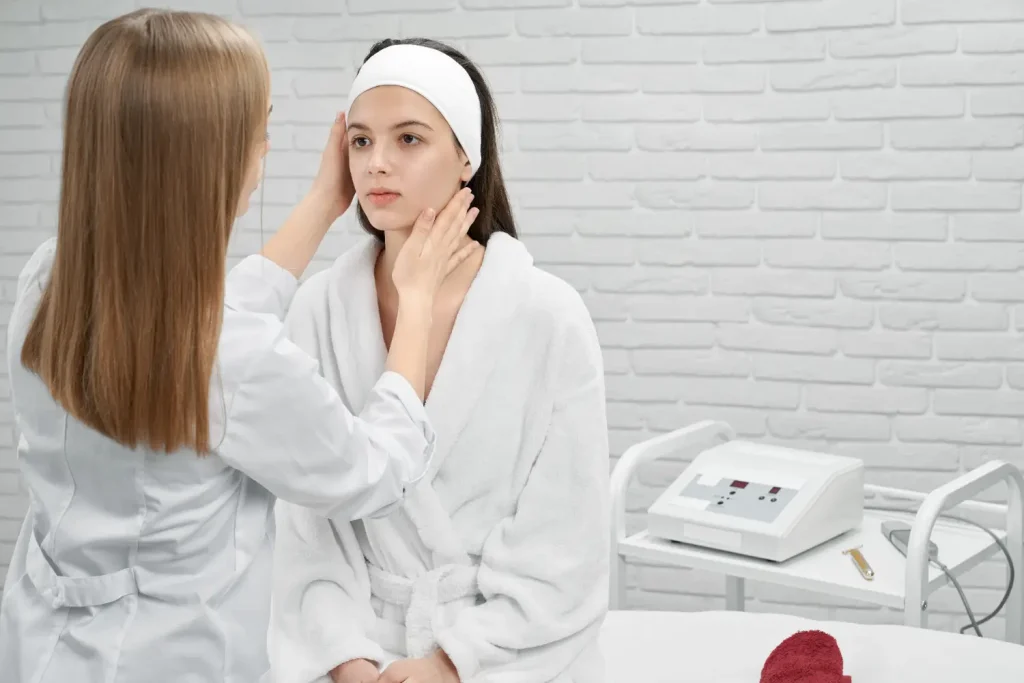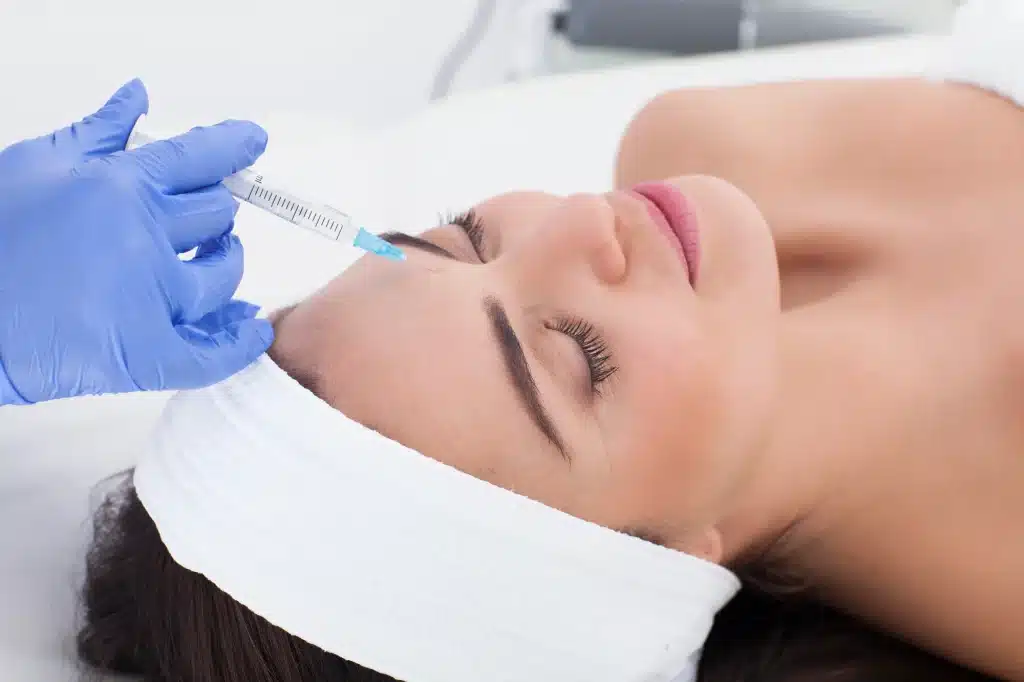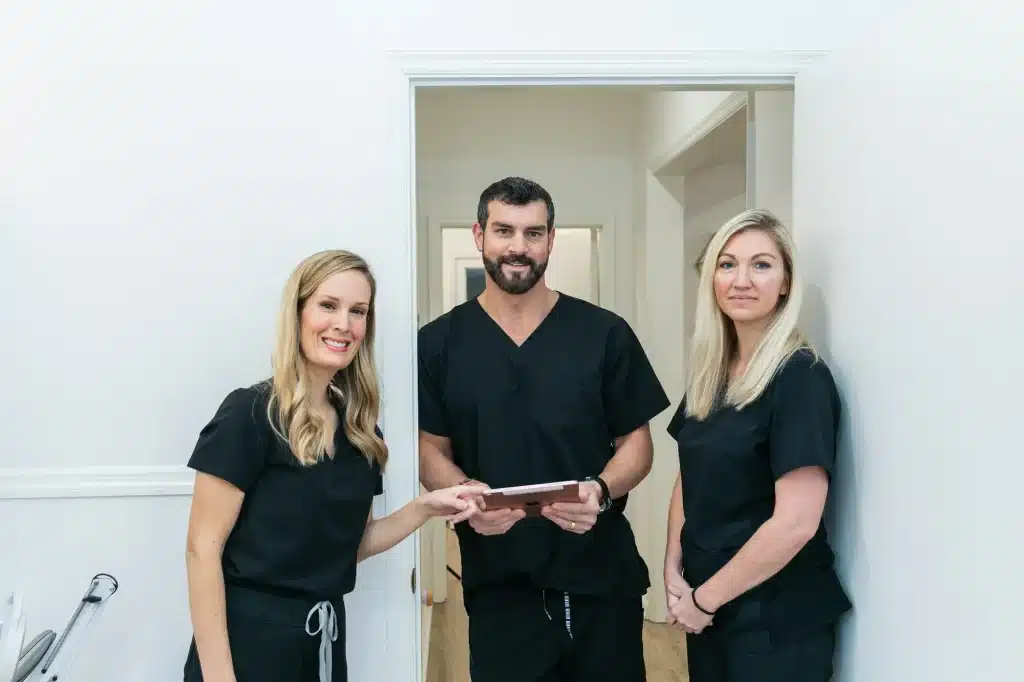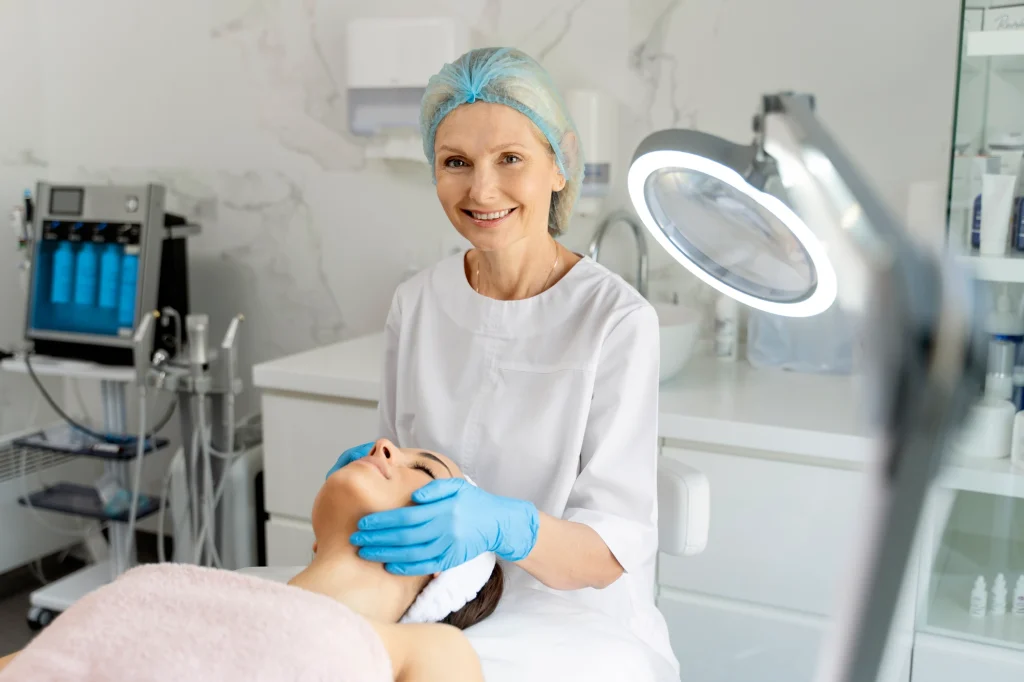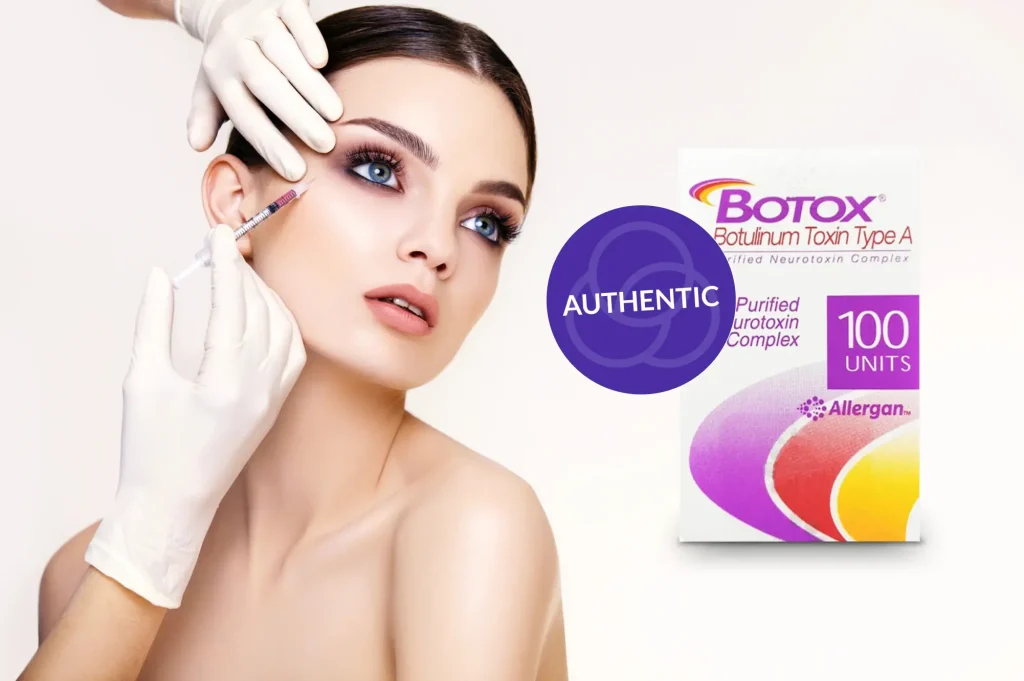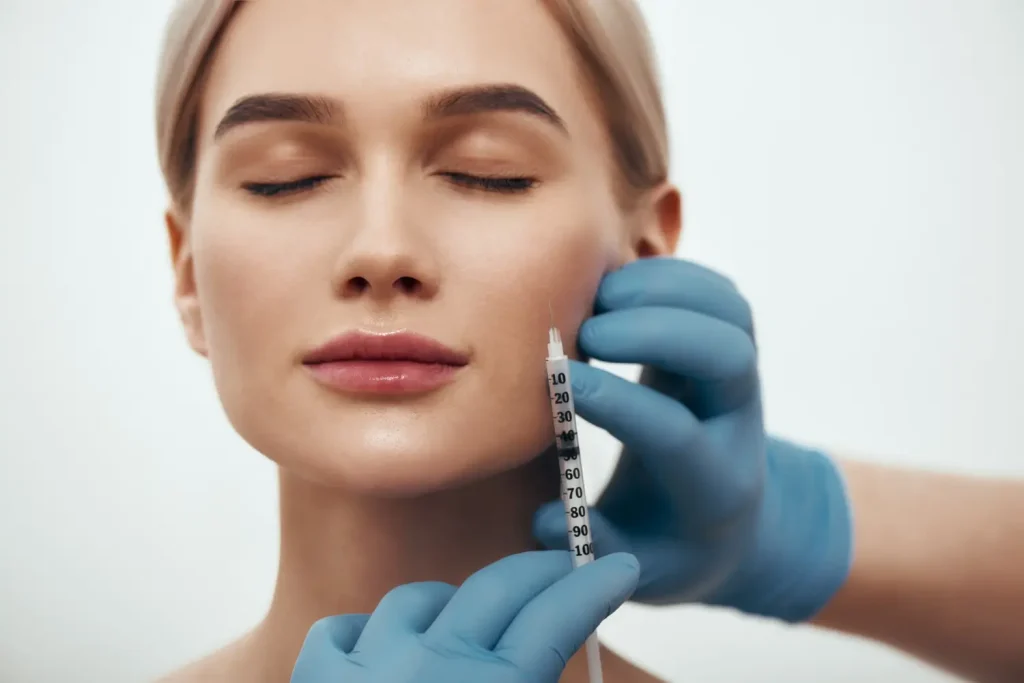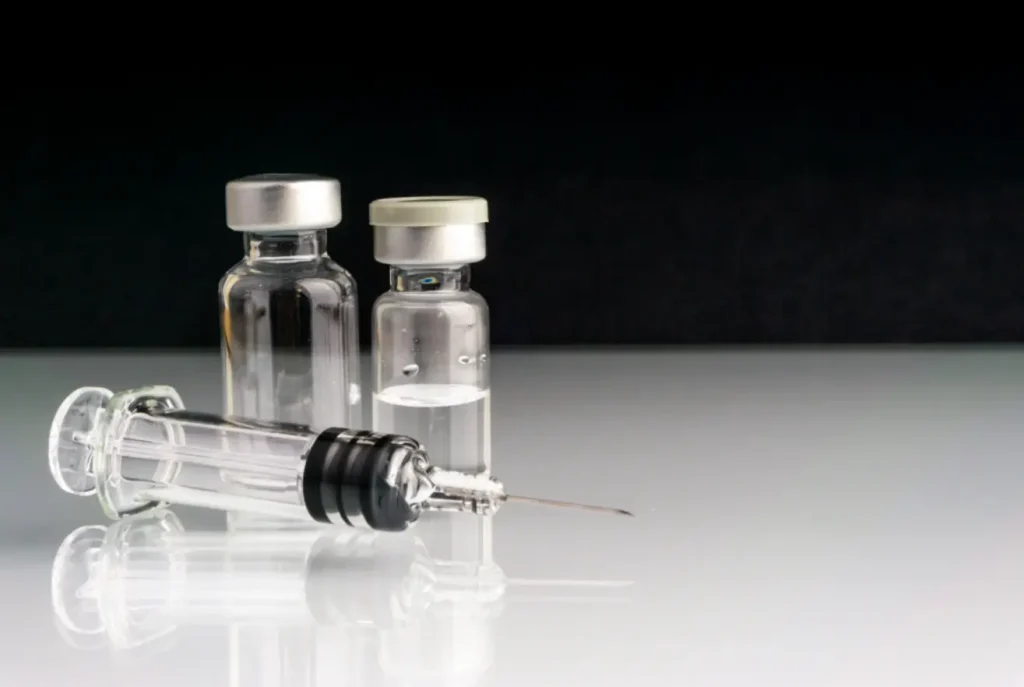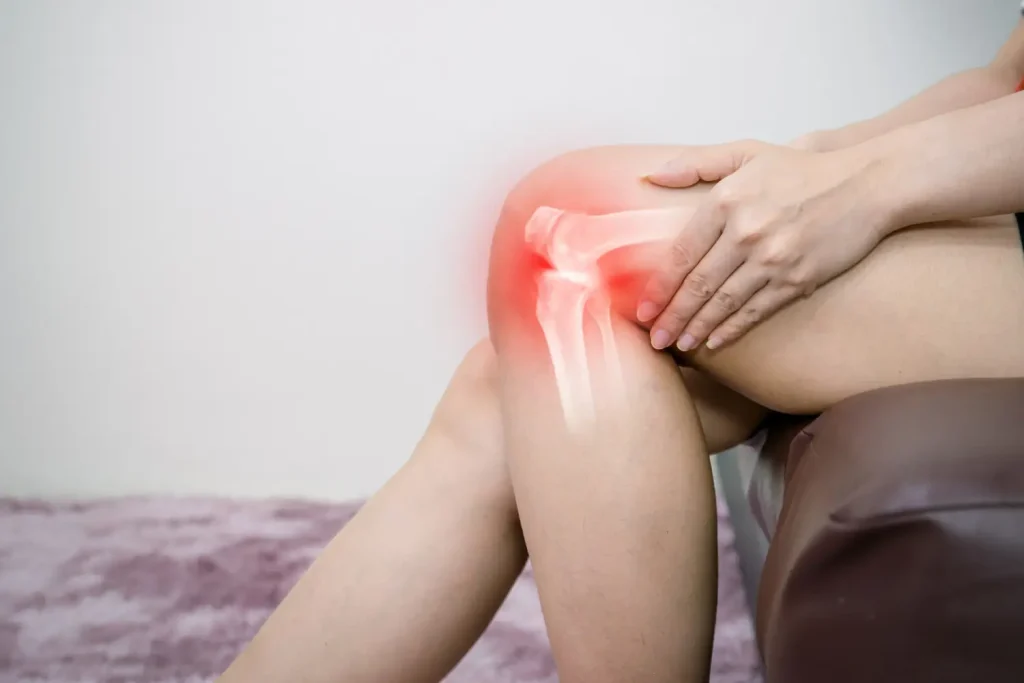According to the American Society of Plastic Surgeons, over 932,000 non-hyaluronic acid filler procedures were performed in 2024, a 1% increase from the previous year. This shows that a growing number of patients and practitioners are turning to longer-lasting options.
Unlike hyaluronic acid (HA) fillers, which offer immediate volume but gradually break down within a year, poly-L-lactic acid (PLLA) stimulates the body’s own collagen production over time. This leads to natural results that can last up to two years or more.
In this article, we’ll break down how PLLA fillers work, where they’re most commonly used, and how they compare to other fillers like HA.
Key Takeaways
- PLLA helps rebuild facial volume through gradual collagen stimulation instead of immediate gel-based filling.
- Collagen produced after PLLA treatment can support skin density and structure for up to two years without frequent maintenance.
- Patients with diffuse volume loss and skin laxity benefit most from PLLA’s slow, structural support.
- Unlike hyaluronic acid, PLLA does not contain cross-linking agents, which means it avoids the Tyndall effect.
- Common side effects of PLLA include swelling, bruising, and tenderness, while rare complications like nodules or granulomas can occur if the technique or aftercare is poor.
What Are Poly-L-Lactic Acid Dermal Fillers?
Poly-L-lactic acid fillers like Sculptra are biodegradable, biostimulatory injectables that stimulate collagen production. Unlike HA fillers, which are space-occupying gels that provide immediate results, PLLA works gradually over several weeks to months.1
Once injected into the deep dermis or subcutaneous tissue, PLLA microparticles provoke a controlled inflammatory response that recruits macrophages and lymphocytes. This stimulates fibroblast activity and leads to the formation of new type I collagen.
As the microparticles break down, they are metabolized into carbon dioxide and water, leaving behind collagen that can last for two years or more. This produces long-term structural improvements in facial volume and skin texture.2
Some commonly used PLLA filler brands include Sculptra®, PowerFill, AestheFill, Derma Veil, and EVOPLLA.
How PLLA Fillers Work
Instead of instantly plumping the skin (like HA fillers), PLLA stimulates the body’s own collagen production over time. Here’s how it works:
1. Injection Day to Week 1
PLLA is injected as a suspension of microparticles in a carrier gel made of mannitol and carboxymethylcellulose (CMC). The initial swelling seen after injection comes from this fluid, not the PLLA itself, and usually subsides within 3-7 days.3
As the suspension disperses in the deep dermis or subcutaneous layer, the immune system recognizes PLLA microparticles as a biocompatible foreign material. Macrophages begin migrating to the site in response.
2. 0-3 Months After Injection
PLLA microparticles trigger a foreign body reaction (FBR). When this happens, macrophages fuse into foreign-body giant cells (FBGCs), which surround the particles and form fibrotic capsules that prevent rapid phagocytosis (due to PLLA’s high molecular weight).
During this time, PLLA degrades via non-enzymatic hydrolysis, breaking down into lactic acid. This byproduct is either metabolized locally or enters the Krebs cycle, where it’s converted to CO₂ and H₂O.4
As breakdown progresses, macrophages release growth factors (like TGF-β, PDGF, and FGF), which activate fibroblasts. These fibroblasts begin producing pro-collagen and extracellular matrix (ECM) proteins in the surrounding tissue.
3. 3-6+ Months After Injection
At this point, fibroblasts start active collagen synthesis and produce:
- Type I collagen (70-90%), which improves structural support
- Type III collagen (10-30%), sometimes called “baby collagen,” which improves skin elasticity and texture
A 3D collagen network forms around the slowly degrading PLLA, which reinforces the dermal architecture. Around the six-month mark, collagen production peaks, and the skin reaches maximum improvement in thickness, elasticity, and volume.
Even after PLLA has fully biodegraded, fibroblast activity persists due to local signaling and “cellular memory.”
Over time, the fibrotic capsules dissolve, and the newly synthesized collagen integrates into the native tissue. These effects last 2+ years because even after PLLA fully dissolves, the new collagen network remains.
However, as collagen turnover naturally occurs, patients may benefit from maintenance injections every 1-2 years to preserve results.
Uses of PLLA Fillers in Facial Rejuvenation
Here are the uses of PLLA fillers in facial rejuvenation:
- Cheek augmentation and midface volume loss. PLLA is used to add volume to the malar and submalar regions through fibroblast activity. The added support lifts nearby tissues and improves facial structure without overfilling.
- Temporal hollowing restoration. PLLA works well in the temple, where the skin is thin and vessels run close to the surface. HA and fat often lead to uneven texture or visible lumps in this area. PLLA avoids these issues through controlled collagen formation.
- Jawline contouring. PLLA adds structure to the lower face without sudden volume shifts. Fibroblasts form a collagen scaffold along the mandibular border, which improves definition over time. This works for patients who want sharper contours without surgery or bulk.
- Under-eye rejuvenation. PLLA can reduce hollowness, fine lines, and thinning skin under the eyes without the puffiness or bluish tint linked to HA.
- Fine wrinkles. PLLA softens deep facial creases without puffing or stretching the skin. In the nasolabial and marionette areas, gradual collagen production reduces visible fold depth and preserves natural movement.
Who Is the Ideal Candidate for PLLA Fillers?
PLLA is recommended for patients looking for gradual, long-lasting improvement in skin quality and facial structure, such as:
- Patients with generalized volume loss and mild to moderate skin laxity
- Adults seeking long-term collagen support instead of immediate plumping
- Younger patients interested in strategies to slow visible aging
- People looking to combine PLLA with HA fillers or skin-tightening
- Patients who prefer gradual results with a lower risk of vascular complications
Who Should Avoid PLLA Injections?
PLLA is not recommended for patients with:
- Active skin infections (including oral herpes)
- Uncontrolled diabetes
- Blood-clotting disorders
- Lupus or other connective tissue diseases
- Known allergy to poly-L-lactic acid, carboxymethylcellulose, or mannitol
- History of keloid or hypertrophic scar formation
- Current pregnancy
- Breastfeeding
PLLA vs. Hyaluronic Acid Fillers
PLLA and hyaluronic acid fillers are both types of injectable fillers that restore facial volume, but they rely on different mechanisms.
PLLA acts through biostimulation. Its microparticles activate fibroblasts to form type I and III collagen over time, which creates gradual, long-lasting improvements in structure, skin texture, and elasticity.
In contrast, hyaluronic acid fills lines and hollows through physical volume replacement. It provides immediate results, but these fade within 6 to 12 months as the gel breaks down. This requires frequent touch-up sessions.5
Here’s a side-by-side comparison:
| Feature | PLLA | Hyaluronic Acid |
| Primary use | Broad facial volume restoration | Site-specific contour and wrinkle fill |
| Mechanism | Collagen stimulation | Space-occupying gel |
| Onset of results | Gradual, over 2-3 months | Immediate |
| Longevity | Up to 2+ years (semi-permanent) | 6-12 months |
| Best for | Global laxity, structural support | Lips, tear troughs, fine lines |
| Limitations | Not suited for lips or under-eyes | Can cause puffiness and the Tyndall effect |
Potential Side Effects of PLLA Fillers
PLLA is generally well tolerated and has a strong safety profile. But it can cause complications. Here are some common side effects of PLLA fillers:
- Swelling, bruising, and erythema at the injection site (resolves within 7-14 days)
- Tenderness or mild pain
- Edema due to injection-related inflammation6
Other rare and delayed complications include:
- Nodule or granuloma formation (may develop weeks to months after injection)
- Visible lumpiness or papules as a result of superficial placement or inadequate massage
- Hypersensitivity reactions
- Localized infection
- Inflammatory reactions with mRNA COVID-19 vaccines, laser treatments, and energy-based devices, if performed before complete healing7
- Periorbital nodules or paraffinoma (reported with off-label use near the lower eyelids, which is not recommended)
- Vascular occlusion
- Embolization
- Drug interactions with anticoagulants like aspirin and apixaban (may increase bruising or hematoma risk)
Source PLLA Fillers Through Medical Spa RX
PLLA fillers help improve skin structure, elasticity, and density in patients with diffuse volume loss and skin laxity. However, results depend on your technique and the quality of the product you inject.
At Medical Spa RX, you’ll find original, name-brand injectables like PowerFill and Sculptra, sourced directly from licensed manufacturers. Since 2009, we’ve supported practices of all sizes with verified products, fast 3-4-day delivery, and no order minimums.
Every item comes with a verifiable LOT number to ensure traceability and quality. So, if you’re looking to source volume restoration solutions that are high-quality, browse our selection of high-quality PLLA fillers today.
FAQs
Can PLLA Be Used Under the Eyes?
While PLLA dermal fillers can be used off-label in the infraorbital region, they are not FDA-approved for this area.
That’s because the under-eye area has thin skin and limited soft tissue coverage, which increases the risk of visible irregularities, nodule formation, or granulomas.
Are PLLA Fillers Reversible?
No, poly-L-lactic acid fillers are not reversible. Unlike HA fillers, which can be dissolved using hyaluronidase, PLLA has to biodegrade over time. This process can take over two years.
Is There Downtime After a PLLA Injection?
While poly-L-lactic acid injections usually have minimal downtime, mild swelling, redness, or bruising at the injection site is common after the treatment.
To reduce complications, patients are often advised to avoid strenuous exercise for at least 24 hours after the injection. You can also advise them to massage the treated area five times daily for five days.
References
1. Ao YJ, Yi Y, Wu GH. Application of PLLA (Poly-L-Lactic acid) for rejuvenation and reproduction of facial cutaneous tissue in aesthetics: A review. Medicine (Baltimore). 2024;103(11):e37506. doi:10.1097/MD.0000000000037506
2. Schierle CF, Casas LA. Nonsurgical rejuvenation of the aging face with injectable poly-L-lactic acid for restoration of soft tissue volume. Aesthet Surg J. 2011;31(1):95-109. doi:10.1177/1090820X10391213
3. Moyle GJ, Lysakova L, Brown S, et al. A randomized open-label study of immediate versus delayed polylactic acid injections for the cosmetic management of facial lipoatrophy in persons with HIV infection. HIV Med. 2004;5(2):82-87. doi:10.1111/j.1468-1293.2004.00190.x
4. Lemperle G, Morhenn V, Charrier U. Human Histology and Persistence of Various Injectable Filler Substances for Soft Tissue Augmentation. Aesthetic Plast Surg. 2020;44(4):1348-1360. doi:10.1007/s00266-020-01827-7
5. Avelar L, Ong A, Ong D, et al. Consensus recommendations on the use of injectable poly-l-lactic acid in Asian patients. J Cosmet Dermatol. 2023;22(12):3223-3231. doi:10.1111/jocd.15969
6. Reszko AE, Sadick NS, Magro CM, Farber J. Late-onset subcutaneous nodules after poly-L-lactic acid injection. Dermatol Surg. 2009;35 Suppl 1:380-384. doi:10.1111/j.1524-4725.2008.01042.x
7. Beamish IV, Bogoch II, Carr D. Delayed inflammatory reaction to dermal fillers after COVID-19 vaccination: a case report. CJEM. 2022;24(4):444-446. doi:10.1007/s43678-022-00289-x




